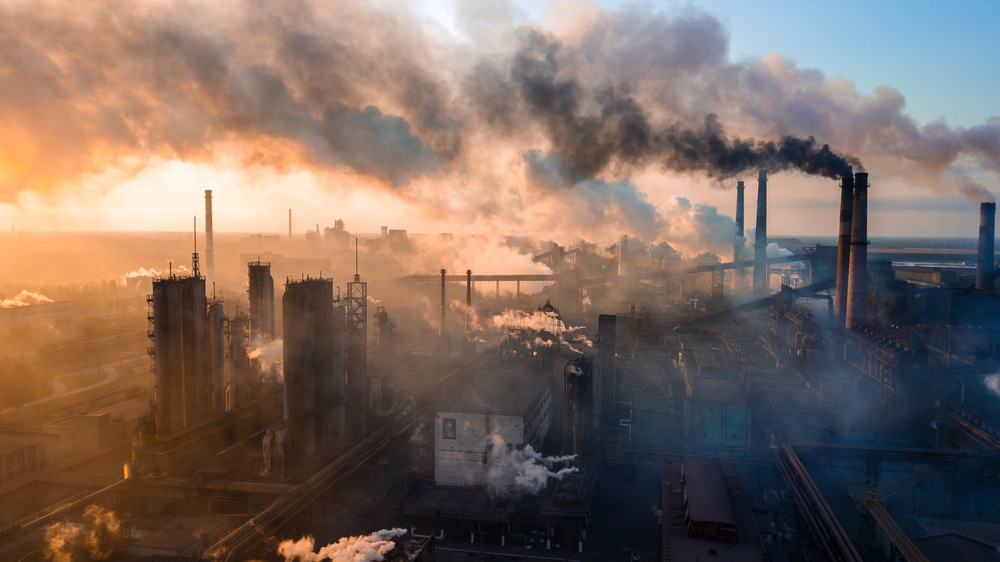On September 25, the US Department of Energy (DOE) launched a pilot project to measure the greenhouse gas intensity of several industrial products, including steel. This move is a part of the Biden administration’s agenda to reduce emissions while boosting sustainable domestic manufacturing. By tracking emissions more effectively, the U.S. steel sector could gain a competitive edge over foreign competitors.
Notably, one key technology helping drive this change is the electric arc furnace, which operates without coal, unlike traditional blast furnaces. This shift aims to lower emissions in the U.S. steel industry, which is a major contributor to global greenhouse gas emissions.
Kevin Dempsey, President and CEO of the American Iron and Steel Institute, remarked,
“The pilot program is a step toward assessing the environmental footprint of industrial products and promoting the output of domestic producers.”
Accurate Emissions Data Crucial for Investors
Fabio Passaro, a senior transition policy analyst at the Climate Bonds Initiative, noted that this initiative creates a strong opportunity for steel producers to lead in the race for greener steel. As regulators, investors, and consumers demand lower-emission products, early adopters of decarbonization could reap significant benefits.
Passaro, who recently authored a report on decarbonizing steel and cement for the G20’s Sustainable Finance Working Group, called the DOE’s pilot project a “great first step.” He emphasized that “you can’t decarbonize what you can’t measure.”
While the details are still being finalized, Passaro pointed out that accurate emissions data is increasingly essential for investors looking to avoid the risks associated with high-emission industries.
Currently, emissions data for the steel sector varies widely in availability and accuracy. Investors are wary of industries like steel due to potential risks, including stranded assets, as governments increasingly enforce stricter emissions regulations. Accurate data, transparency, and public availability are critical for addressing these concerns and encouraging investment in greener steel production.
Decarbonizing the steel industry is complex and costly but necessary. Passaro believes that with this pilot project, the US is prioritizing the decarbonization of the steel industry.
U.S. Steel Emissions Report
Source: United States Steel Corporation 2023 Sustainability Report
U.S. Steel’s Major Moves to Cut Emissions
Tracking emissions is one side of the story. Subsequently, it is equally important to combat steel emissions. In this regard, U.S. Steel is making significant progress in reducing emissions through recycling, energy efficiency, and advanced technologies.
Process Optimization and Renewable Energy
U.S. Steel is actively increasing efficiency in its operations through process optimization models, which enhance performance at existing steel mills. The company is also expanding its use of renewable energy sources, such as the Driver Solar project at Big River Steel Works. These initiatives demonstrate a growing commitment to reducing reliance on fossil fuels and embracing cleaner power options.
Innovating with Direct-Reduced Iron and Mini Mills
Direct-reduced iron (DRI) with natural gas is helping U.S. Steel cut back on carbon-intensive coal and coke. Plans to incorporate hydrogen into the DRI process will further reduce greenhouse gas emissions. Mini mills, such as those at Big River Steel Works, already rely on electric arc furnaces, which generate 70–80% fewer emissions than traditional blast furnaces. The company will expand its mini mill capabilities with the BR2 facility in late 2024.
Exploring Carbon Capture and Electrification
Emerging technologies like carbon capture are expected to play a key role in reducing U.S. Steel’s carbon footprint. Electrification and the use of batteries and hydrogen in place of carbon-based fuels are additional strategies to lower emissions.
With advancements in the electrical grid and a shift toward green energy, U.S. Steel anticipates reductions in both Scope 1 and Scope 2 emissions. Significantly, carbon offsets and credits will further bridge any remaining gaps in the company’s decarbonization efforts.
The U.S. aims to achieve 100% carbon-free electricity by 2035, a move that will significantly aid the decarbonization of heavy industries like steel and aluminum. It’s worth quoting that President Biden’s Inflation Reduction Act allocates $369 billion to combat climate change and provides a strong foundation for cleaner industrial operations.
Leveraging Carbon Policies
According to Global Efficiency Intelligence, the U.S. steel industry can fully capitalize on its lower carbon intensity through policy measures like Border Carbon Adjustments and Carbon Tariffs. These policies would promote cleaner domestic production and support global decarbonization goals.
Additionally, initiatives like “Buy Clean” would boost the use of low-carbon steel in public projects, strengthening the industry’s competitiveness and reinforcing U.S. leadership in reducing emissions. Overall, it’s evident that U.S. Steel is taking serious steps to track and mitigate steel emissions to achieve the nation’s net-zero target.



